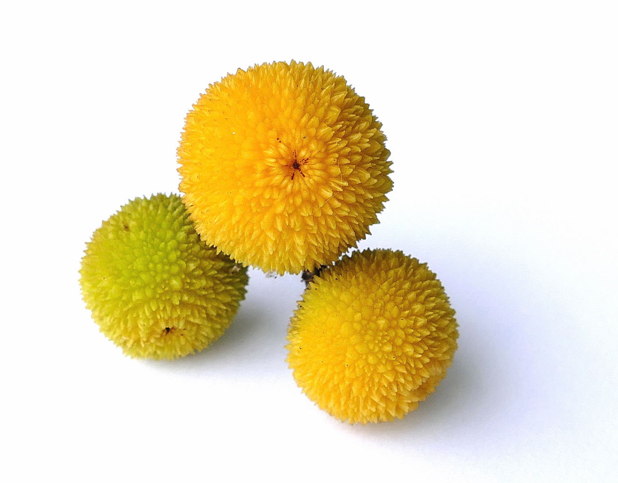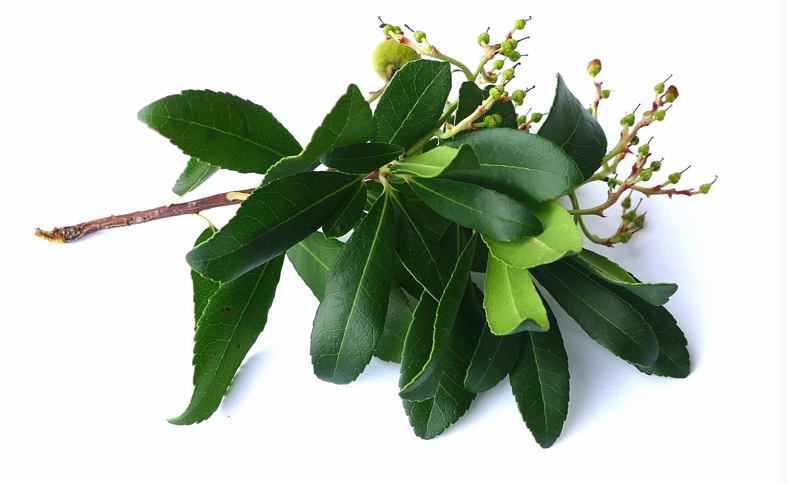| "Kumquat studies" by Nat45 (5724 pt) | 2022-Nov-14 11:45 |
Review Consensus: 8 Rating: 8 Number of users: 1
| Evaluation | N. Experts | Evaluation | N. Experts |
|---|---|---|---|
| 1 | 6 | ||
| 2 | 7 | ||
| 3 | 8 | ||
| 4 | 9 | ||
| 5 | 10 |
Compendium of the most significant studies with reference to properties, intake, effects.
Tan S, Zhao X, Yang Y, Ke Z, Zhou Z. Chemical Profiling Using Uplc Q-Tof/Ms and Antioxidant Activities of Fortunella Fruits. J Food Sci. 2016 Jul;81(7):C1646-53. doi: 10.1111/1750-3841.13352.
Abstract. The fruits of Fortunella Swingle are widely consumed as fresh fruits and traditional medicine in China. China is the origin center and has the largest cultivated area of the genus Fortunella. In this study, the chemical compositions of ethanol extracts of the major Fortunella cultivated types including Fortunella japonica Swingle, Fortunella margarita Swingle, Fortunella crassifolia Swingle 1 (Lanshang) and Fortunella crassifolia Swingle 2 (Liuyang) were determined using ultra performance liquid chromatography coupled with quadrupole time-of-flight mass spectrometry (UPLC Q-TOF/MS) method, and their antioxidant activities were evaluated. 12 compounds were identified and 5 compounds were tentatively characterized. The results showed that the chemical compositions of the ethanol extracts of 4 Fortunella cultivated types were largely the same. 3', 5'-di-C-glucopyranosylphloretin was the predominant flavonoid in Fortunella fruits, and Fortunella margarita Swingle had higher contents of flavonoids than other species. In addition, the data demonstrated high antioxidant activities of Fortunella fruits. The developed method could be available to rapidly analyze the chemical compounds in Fortunella fruits and its products. This study will provide information for further quality assessment and utilization of Fortunella resources.

Sadek ES, Makris DP, Kefalas P. Polyphenolic composition and antioxidant characteristics of kumquat (Fortunella margarita) peel fractions. Plant Foods Hum Nutr. 2009 Dec;64(4):297-302. doi: 10.1007/s11130-009-0140-1.
Abstract. The polyphenolic composition of two Fortunella margarita (Nagami kumquat) specimens from Greece and Egypt was investigated employing fractionation by solvent partition and liquid chromatography-mass spectrometry. The main groups of phenolics identified in the different fractions generated were C-glycosylated flavones, O-glycosylated flavones, C-glycosylated flavanones, O-glycosylated flavanones, flavonols, chalcones, phenolic acids and derivatives thereof. The antioxidant potency of the fractions was assessed using two representative in vitro tests, including antiradical activity and hydroxyl free radical scavenging activity. It was revealed that the ethyl acetate fractions from both specimens contained the higher polyphenol content and exhibited the better antioxidant characteristics. The results indicated that F. margarita peels may be regarded as a rich source of potentially bioactive polyphenols.

Sutour S, Lurob F, Bradesi P, Casanova J, Tomi F. Chemical Composition of the Fruit Oils of Five Fortunella Species Grown in the Same Pedoclimatic Conditions in Corsica (France). Nat Prod Commun. 2016 Feb;11(2):259-62.
Abstract. Fruit oil from five species of kumquat (Fortunella japonica, F. margarita, F. crassifolia, F. obovata, and F. hindsii) grown in the same pedoclimatic conditions have been analyzed by a combination of chromatographic and spectroscopic techniques. The compositions of the five fruit oils were strongly dominated by limonene (84.2-96.3%). Other components present with appreciable contents were myrcene (1.3-12.9%) and germacrene D (0.3-2.4%).
Çakmakçı S, Topdaş EF, Çakır Y, Kalın P. Functionality of kumquat (Fortunella margarita) in the production of fruity ice cream. J Sci Food Agric. 2016 Mar 30;96(5):1451-8. doi: 10.1002/jsfa.7241.
Abstract. Background: The aim of this study was to investigate the effect of kumquat (Fortunella margarita) on the quality characteristics of ice cream. Kumquat paste (KP) was added to an ice cream mix at four concentrations, 0 (control), 5, 10 and 15% (w/w), for ice cream production. Results: The increment of KP level caused an increase in acidity, vitamin C content, b* value and overrun value compared with the control ice cream. The apparent viscosity of samples decreased with the addition of KP at concentrations of 5 and 10% compared with the control. Results indicated that lyophilized water extract of KP (LKE) contained remarkable phenolic compounds. It was observed that LKE exhibited moderate in vitro antioxidant capacity. KP enhanced the color, flavor, vitamin C content and Mg and K contents of the ice cream. The addition of KP positively affected the sensory properties. Conclusion: KP may be used as a suitable source of natural color and flavor agent in ice cream production. KP enhanced the vitamin C content and Mg and K contents of ice cream and improved its sensory properties. © 2015 Society of Chemical Industry.

Zeng H, Zhang Y, Zhao Y, Tian Y, Miao S, Zheng B. Extraction optimization, structure and antioxidant activities of Fortunella margarita Swingle polysaccharides. Int J Biol Macromol. 2015 Mar;74:232-42. doi: 10.1016/j.ijbiomac.2014.12.013.
Abstract. The objective of this study was to maximize the yield of polysaccharides extracted from Fortunella margarita Swingle (FMPS) and investigate the relationship between the structure and antioxidant activities. The optimal conditions for ultrasonic-assisted extraction (UAE) of FMPS were ultrasonic power 171W, extraction temperature 50°C, water volume to raw material weight (W/M) ratio 32 ml/g and extraction time 87 min. Under these conditions, the yield of FMPS was 4.15±0.11% (w/w), which was increased by 129.28% compared to hot water extraction. FMPS3, the main fraction of FMPS, was isolated by DEAE Sepharose CL-6B column chromatography. According to size-exclusion chromatography, multi-angle laser light-scattering and refractive index (SEC-MALLS-RI), the molecular weight (Mw), polydispersity index (Mw/Mn) and root-mean-square turning radius (Rg) of FMPS3 were 4.58×10(5) (±2.02%) Da, 1.08 (±1.23%), 28.13 (±1.73%) nm, respectively. FMPS3, linked mainly by β-glycosidic bonds, consisted of galactose, galacturonic acid, glucose, mannose and rhamnose as shown by HPLC, FT-IR, 1H NMR and 13C NMR. Furthermore, FMPS3 displayed strong scavenging ability against hydroxyl, superoxide and DPPH radicals. The activity was affected by the monosaccharide composition, molecular weight and proportion of β-glycosidic bonds and was a result of a combination of multiple structural factors. FMPS3 is potentially a novel natural antioxidant agent. Copyright © 2014 Elsevier
Amjad R, Mubeen B, Ali SS, Imam SS, Alshehri S, Ghoneim MM, Alzarea SI, Rasool R, Ullah I, Nadeem MS, Kazmi I. Green Synthesis and Characterization of Copper Nanoparticles Using Fortunella margarita Leaves. Polymers (Basel). 2021 Dec 13;13(24):4364. doi: 10.3390/polym13244364.
Abstract. The use of biomaterials in the synthesis of nanoparticles is one of the most up-to-date focuses in modern nanotechnologies and nanosciences. More and more research on green methods of producing metal oxide nanoparticles (NP) is taking place, with the goal to overcome the possible dangers of toxic chemicals for a safe and innocuous environment. In this study, we synthesized copper nanoparticles (CuNPs) using Fortunella margarita leaves' extract, which reflects its novelty in the field of nanosciences. The visual observation of a color change from dark green to bluish green clearly shows the instant and spontaneous formation of CuNPs when the phytochemicals of F. margarita come in contact with Cu+2 ions. The synthesis of CuNPs was carried out at different conditions, including pH, temperature, concentration ratio and time, and were characterized with UV-Vis absorption spectra, scanning electron microscope (SEM) and X-ray diffraction (XRD). The UV-Vis analysis reveals the surface plasmon resonance property (SPR) of CuNPs, showing a characteristic absorption peak at 679 nm, while SEM reveals the spherical but agglomerated shape of CuNPs of the size within the range of 51.26-56.66 nm.

Ge YB. Chemical constituents of Fortunella margarita fruits. Zhong Yao Cai. 2014 Mar;37(3):435-8.
Abstract. Objective: To study the chemical constituents of the fruits of Fortunella margarita. Methods: The constituents were isolated and purified on silica gel column and other column chromatography, and their structures were determined by means of spectral techniques and physicochemical data. Results: 11 compounds were isolated and identified as fortunellin (1), naringenin (2), phloridzin (3), nicotinflorin (4), rhoifolin (5), 4'-methoxy vitexin-2"-O-alpha-L-rhamnopyranoside (6), 4'-methoxy isovitexin-2"-O-alpha-L-rhamnopyranoside (7), rutin (8), phloretin-3', 5'-di-C-beta-glucopyranoside (9), 5-hydroxymethyl-furaldehyde (10) and beta-sitosterol (11).
| Evaluate |

